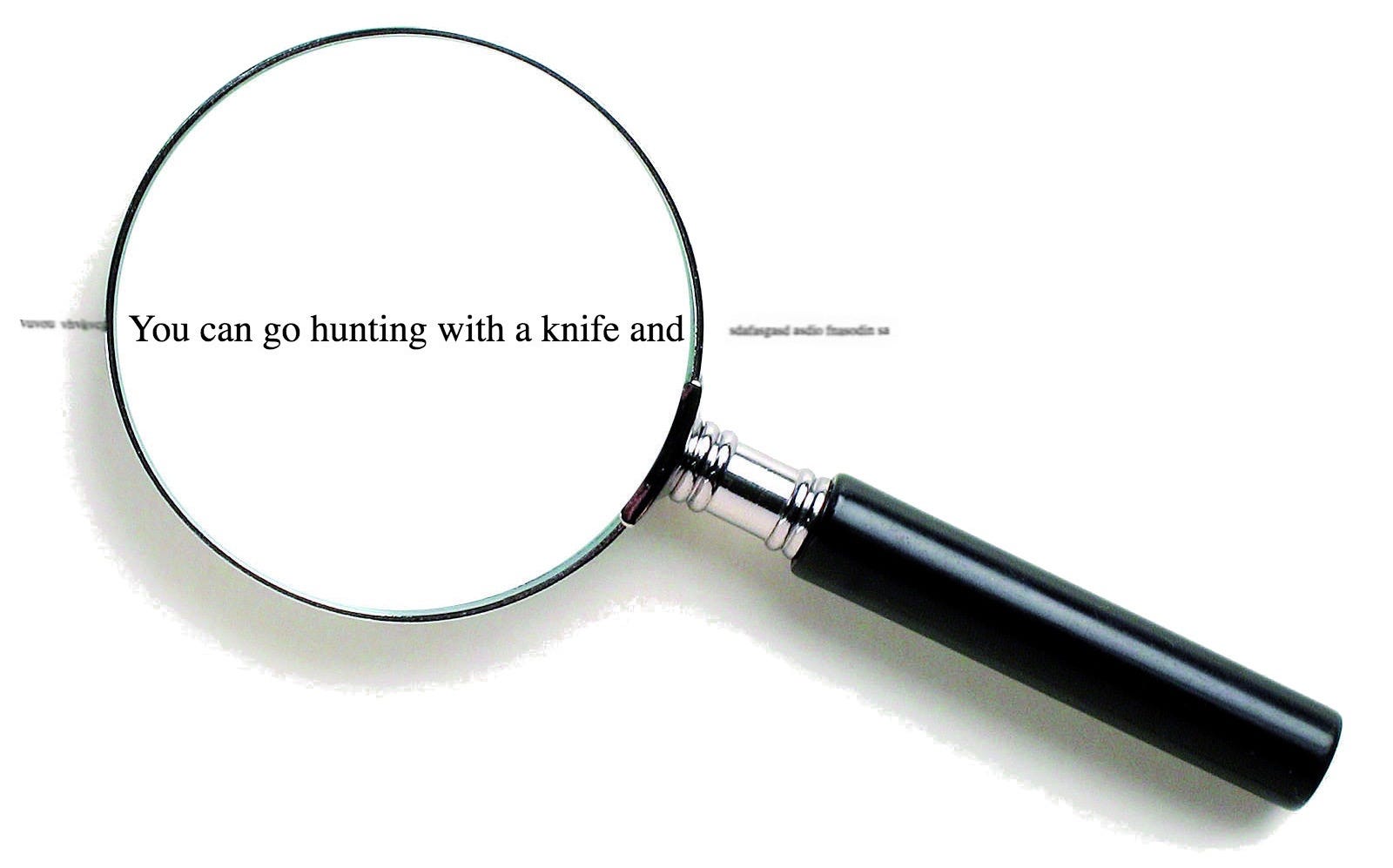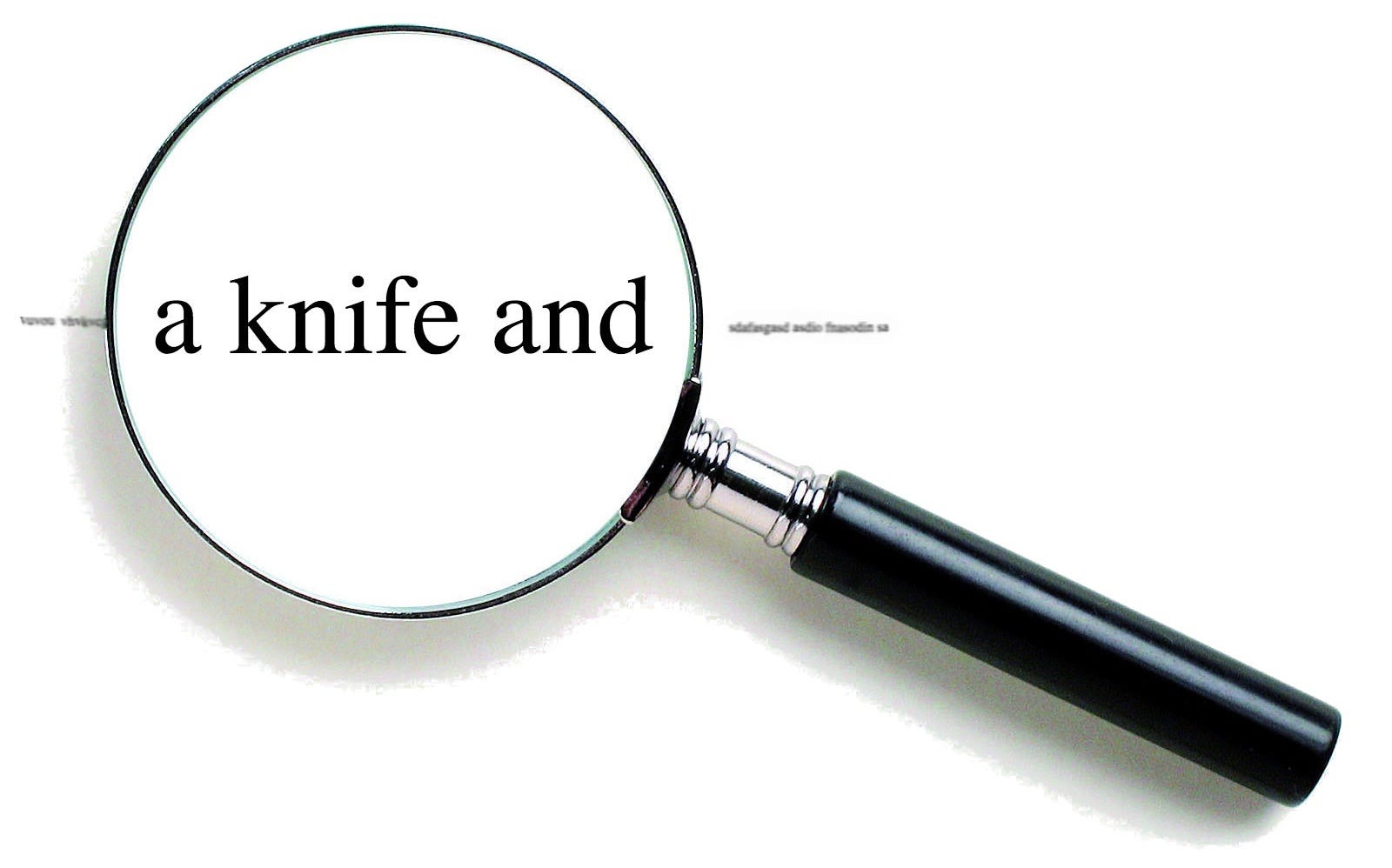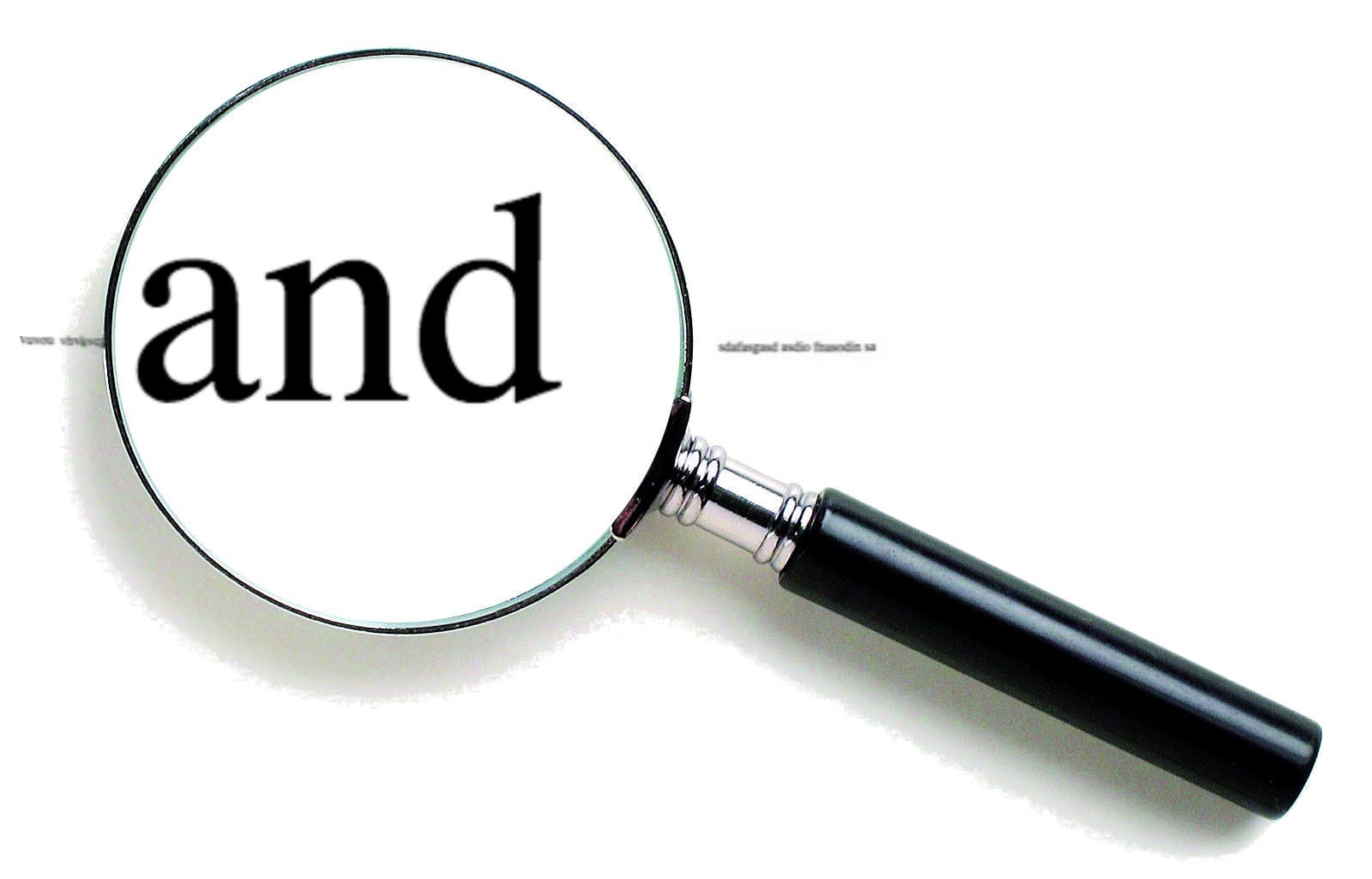This article explains in a clear and practical way autistic perception: how people with autism and Asperger’s perceive the world.
Imagine reading a book having to use a magnifying glass. If the magnifying power of the lens is low one full sentence at a time can be read (image 1). You can easily focus to the meaning of the sentence as a whole, and you can easily predict what comes next. In the example of image 1, the sentence “You can go hunting with a knife and” can easily be completed with “catch a bear” [1]. This is how a person not on the autistic spectrum perceives the world.

Now imagine having to read using a stronger magnifying glass: this time you can only read a couple of words at once (image 2). You start reading from the beginning of the sentence, a few words at a time, until you reach “a knife and”. At this point, your mind, focused on the few words it is seeing, will be tempted to predict the next ones as “a fork”. The full sentence, “You can go hunting with a knife and a fork” doesn’t make much sense; however, if you take into account you could only see “a knife and”, the “a fork” completion looks more correct than “catch a bear”. This is how a high-functional autistic person (or an Asperger) perceives the world.

Lastly, please imagine having to read using a very strong magnifying glass, whose “zoom” effect is so strong it will only allow you to see a few letters at a time (image 3). You are not able anymore to make use of the meaning of the full sentence: you are now unable to predict which words follow the “and” without using the context provided by the previous ones (which you cannot see anymore). Instead, the letters are now much more detailed to you, and other thoughts start to occupy your mind (for example, the font used to print the letters). This is how a low-functional autistic person perceives the world.

People on the Autism Spectrum tend to master detailed domains with more ease but experience more difficulty with respect to contextual domains. The further a person is on the Spectrum (the stronger their Magnifying Glass), the more intense is this effect.
Before I thoroughly define the characteristics of those two domains, it must be noted that very few domains are 100% contextual or 100% detailed. More frequently , they are somewhere in the middle, for example, 80% contextual and 20% detailed.
The distinction between contextual and detailed domains is important, as the more contextual a domain is, the higher is the probability that someone on the Spectrum will exhibit an observable, abnormal behavior.
You can find a detailed description of the two domains in the second chapter of the Autism Guide.